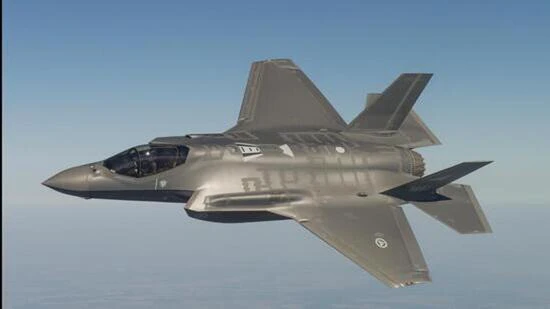NEW DELHI: The Aeronautical Development Agency (ADA) on Wednesday invited expression of interest (EOI) for the development of the advanced medium combat aircraft (AMCA) to shortlist Indian companies capable of building prototypes and supporting flight test and certification of the indigenous fifth-generation stealth fighter.
The ADA, which comes under the Defence Research and Development Organisation (DRDO), is executing the AMCA programme through industry partnership.
The applicant may be a single company, joint venture or a consortium of companies, compliant with Indian laws and regulations, the EOI document seen by HT said.
“Reputed Indian companies experienced in aerospace and defence sector with capability to absorb the design of AMCA and have adequate experience in the field of development & engineering, manufacturing, equipping, integration, testing, quality management, customer support etc will be shortlisted,” it said.
On May 27, the defence ministry unveiled its long-awaited plan to fast-track the development of AMCA, announcing that the execution model will be competitive and provide equal opportunities to public and private sector firms to participate in one of the country’s most significant military projects.
The approval of the industry partnership model by defence minister Rajnath Singh came at a critical moment as state-run plane maker Hindustan Aeronautics Limited (HAL) — the sole manufacturer of fighter jets in the country — was till then believed to be the frontrunner for the project.
The shortlisted entity must be capable of setting up a manufacturing facility for the series production of AMCA, the EOI said. “The duration of the contract for development, prototyping, flight test and certification of AMCA shall not exceed eight years from the effective date of contract.”
A pre-EOI meeting will be held in the first week of July 2025 to provide an opportunity to the Indian firms to seek clarifications regarding the project. The deadline for EOI submission is August 16.
The first prototype of the stealth fighter is expected to make its maiden flight in 2029, and AMCA’s development is likely to be completed by 2034 before it goes into production a year later.
The execution model unlocks new possibilities for the local aerospace industry, including firms such as Tata Advanced Systems Limited, Larsen & Toubro, Adani Defence and Aerospace and the Mahindra Group. To be sure, HAL is still a strong contender for the project.
Speeding up the AMCA programme is critical as China has already deployed the J-20 fifth-generation fighters, it is rolling out the J-35 stealth fighters that Pakistan is looking at buying, and it has tested two so-called sixth-generation platforms designated J-36 and J-50.
Last year, the PM-headed Cabinet Committee on Security (CCS) approved the AMCA’s design and prototype development at a cost of around ₹15,000 crore. This involves the design and development of five twin-engine AMCA prototypes. The IAF’s modernisation map envisages the deployment of around 120 stealth fighters (six squadrons) 2035 onwards, with the advanced planes forming an important element of future air combat.
India is firmly pushing ahead with the AMCA programme even though both the United States and Russia have offered New Delhi their fifth-generation fighters. In February, US President Donald Trump said America is paving the way to provide India the F-35 stealth fighters. Earlier this year, Russia offered to jointly produce its Su-57 stealth fighter in the country.
The AMCA is expected to be developed in two phases, as previously reported by HT.
The first two squadrons will consist of the Mk-1 version of AMCA powered by the American F-414 engines, while the remaining four squadrons will have the more advanced Mk-2 version equipped with an even more powerful engine to be built in India with foreign collaboration.
The 25-tonne AMCA will be a swing-role fighter with stealth features to increase survivability in combat, advanced avionics, smart weapons stored internally, top-end mission computers, 360-degree situational awareness, and super-cruise capability that will allow it to fly at supersonic speeds for extended periods without using fuel-guzzling afterburners.
